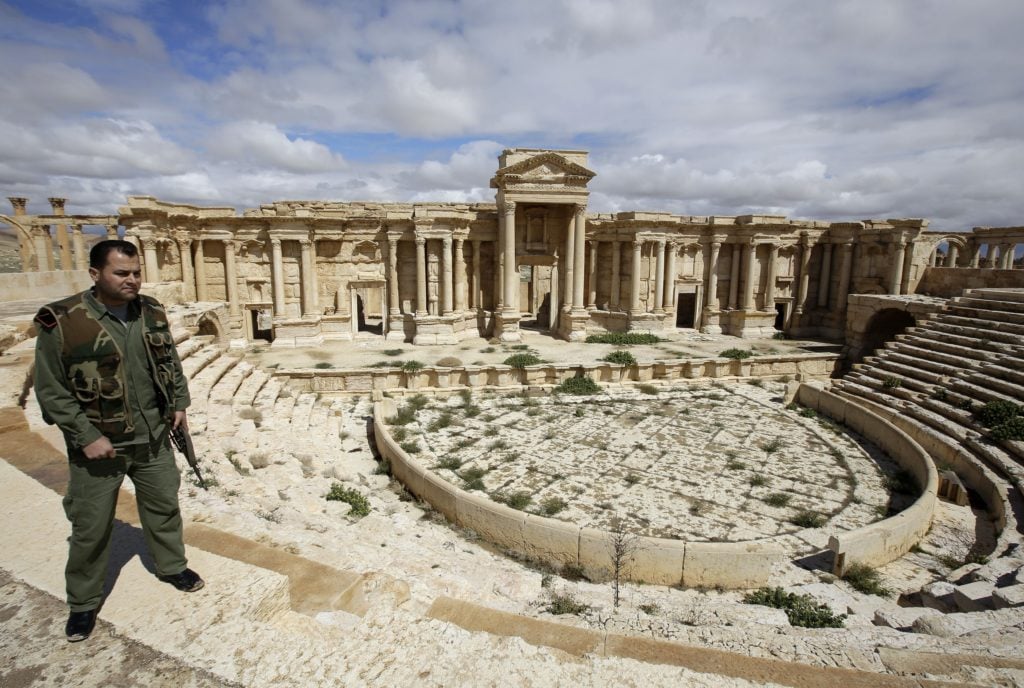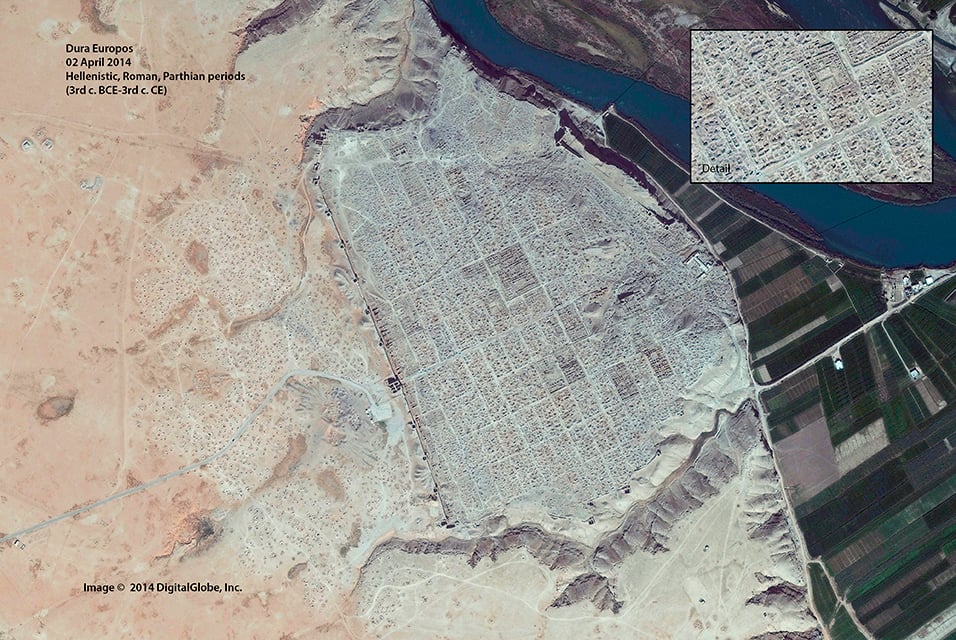Law & Politics
New Study Reveals ISIS Isn’t the Only Group Looting and Destroying Syrian Cultural Sites
Is the Syrian regime also responsible?

Is the Syrian regime also responsible?

Sarah Cascone

ISIS isn’t the only one responsible for the looting and destruction of cultural heritage sites in Syria, according to a recently-published study led by researchers at Dartmouth University. Based on an analysis of satellite imagery of roughly 1,300 Syrian archaeological sites, Kurdish opposition forces, and even Syrian authorities, may also be involved in the lucrative antiquities market.
The study, led by Dartmouth anthropology professor Jesse Casana, compared satellite data of 1,300 sites compiled by Digital Globe from 2007 to the present with older images, including CORONA satellite photos from the 1960s that have since been declassified.
“I was pretty disheartened to see how widespread damage actually is, with nearly a quarter of all sites in our sample showing evidence of war-related looting,” Casana told artnet News in an email.
“Instances of severe, state-sanctioned looting are occurring in both ISIS-held and Syrian regime areas,” she said in a statement.

Satellite imagery showing looting at Dura Europos, an archaeological site in Syria.
Photo: FBI.
Casana’s findings were published in the Near Eastern Archaeology journal. Although the study indicates that looting is at its worst in regions held by the Kurdish People’s Protection Units (YPG), the looting in ISIS-held areas was generally the most severe, being carried out with the help of heavy machinery.
Since the outbreak of war in 2011, looting has become an increasingly widespread issue in the country, and over 25 percent of Syria’s archaeological sites have been pillaged.

Mar Takla church, Maaloula, Syria (2007). Photo: Sergenious, via Panoramio.
Researchers believe their analysis indicates “small-scale subsistence looting in opposition-held and Kurdish YPG areas, but more intensive, potentially state-sanctioned looting in Syrian regime and ISIS-held regions.”
These findings put the brunt of the blame on the Assad regime and the Islamic State, but also on institutions that have been accepting items of dubious provenance. “Ultimately, it would be very helpful to create an international database of non-looted antiquities, with the assumption that most antiquities that lack a solid pedigree are most likely looted,” Casana told artnet News in an email.